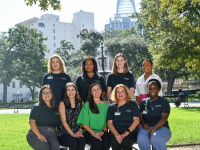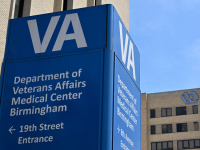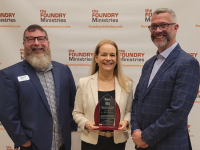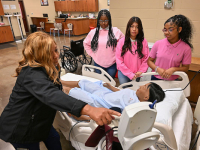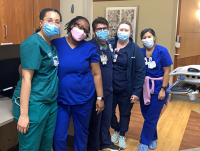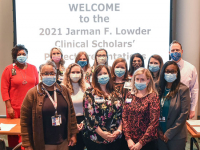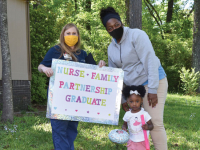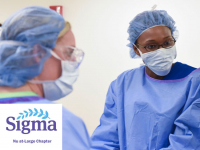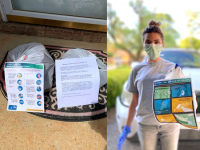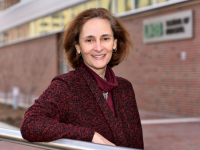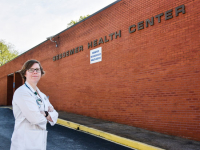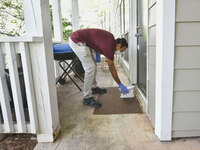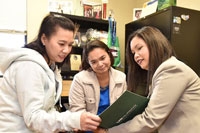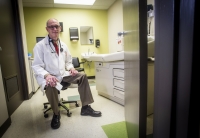 James (Jim) Raper, PhD, CRNP, JD, FAANP, FAAN, is a tenured Professor in the UAB School of Medicine, the only nurse with a primary appointment, and holds a secondary appointment in the School of Nursing. As Director of the UAB 1917 Clinic, Raper leads a multidisciplinary team of dedicated HIV health care professionals serving more than 3,000 individuals. In early 2014, he was featured in the book Positive, which traces the life of internationally known HIV/AIDS expert and Director of the UAB Center for AIDS Research, UAB Professor Michael S. Saag, MD. It is the first time Raper publicly acknowledged his own HIV diagnosis.
James (Jim) Raper, PhD, CRNP, JD, FAANP, FAAN, is a tenured Professor in the UAB School of Medicine, the only nurse with a primary appointment, and holds a secondary appointment in the School of Nursing. As Director of the UAB 1917 Clinic, Raper leads a multidisciplinary team of dedicated HIV health care professionals serving more than 3,000 individuals. In early 2014, he was featured in the book Positive, which traces the life of internationally known HIV/AIDS expert and Director of the UAB Center for AIDS Research, UAB Professor Michael S. Saag, MD. It is the first time Raper publicly acknowledged his own HIV diagnosis.
Q: Why did you allow Dr. Saag to tell your story in the book Positive?
A: Mike thought it was a valuable story to intertwine throughout the book. He came to me and said he thought my story is very powerful and would really resonate with people. And I thought about it and it just seemed to make sense to me at this point in my career and at this point in my life. I have nothing to be ashamed of and nothing to hide. I have a disease I acquired when I was quite young and I’ve lived with it. Fortunately I've done extremely well. And I think if other people can know my story they can say, “He can do it, I can do that too.”
Q: Did you have any concerns at what the reaction might be?
A: My biggest concern was for my patients. When you take care of people I think it’s very important to maintain the patient-provider relationship. I don’t think it’s a healthy thing for patients to be thinking about my disease or my problems. Anytime when people over the years have asked—and I don’t lie to people—I would say my health status is not why you’re here…your health status is why you’re here today and we need to stay focused on that. And I’ve had colleagues from all over the United States who have emailed me or called me after reading Dr. Saag’s book to say, “Jim I’m so proud of you for coming out like this and for being open. It’s meaningful. It has an impact.” I’ve only had support and affirmation from my colleagues who have contacted me.
Q: Was stepping away from seeing patients after your diagnosis a consideration because of the stigma of HIV?
A: I’ve never thought about not taking care of patients. I was originally diagnosed in the mid-1990s but I remember when I was infected. I was in the Army, 1982… when I became deathly ill with high fever and a rash and I was hospitalized. We didn’t know that HIV even existed then. The Army physicians diagnosed me with a strep infection although I never had a positive strep test. In retrospect I’m sure it was an acute viral syndrome. Many years later, I went on HIV medications through an early clinical trial here at UAB. I’ve been on them a long time and I’ve done extremely well. Naturally, I would not have chosen this if I had my druthers but it’s what my life has brought to me and I’ve never thought about not being involved in the battle against HIV.
Q: How over the years has your diagnosis influenced your practice or research?
A: Every successful person I know is driven by something. My something has been my LGBT community, growing up as a gay youth in rural North Carolina, in an Appalachian religious environment, and then entering college and going into the military. It was about that time when the HIV bomb fell and began its rippling devastation. I lost so many friends. I can’t even begin to count the number of friends and associates who died—and my first partner. When I had the opportunity to get involved with HIV science and health care I wanted to seize the moment. Once I got into it and saw the wonderful opportunities that the new emerging medications offered to improve the lives of all of these people who were essentially given a death sentence, I became more and more excited and more and more engaged. The memories of the patients, friends and loved ones I have lost, and the hope for tomorrow for the patients that I take care of, have sustained me over the past 18 years.
Q: What has been your proudest moment at the 1917 Clinic?
A: What we have individually and collectively accomplished during this past year for our patients during the transition of the St. George’s Clinic to the 1917 Clinic. With the closure of Cooper Green Mercy Hospital (the county hospital) and the absolute travesty of what happened when government turned its back on the people it was supposed to protect…UAB and Jim Raper said we’re not going to let those people go without health care. We did what we needed to do to bring in those 800 patients. We provided them with a medical home. Not once did any of the administrators from UAB give me any push-back in terms of doing the right thing and taking care of those patients. It was a huge potential for economic adversity, but we were able to bring those people on and integrate them into our clinic. I could not be more proud of UAB or the 1917 Clinic.

